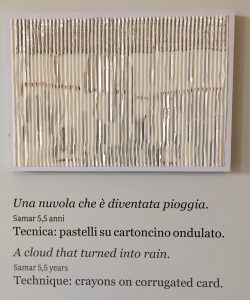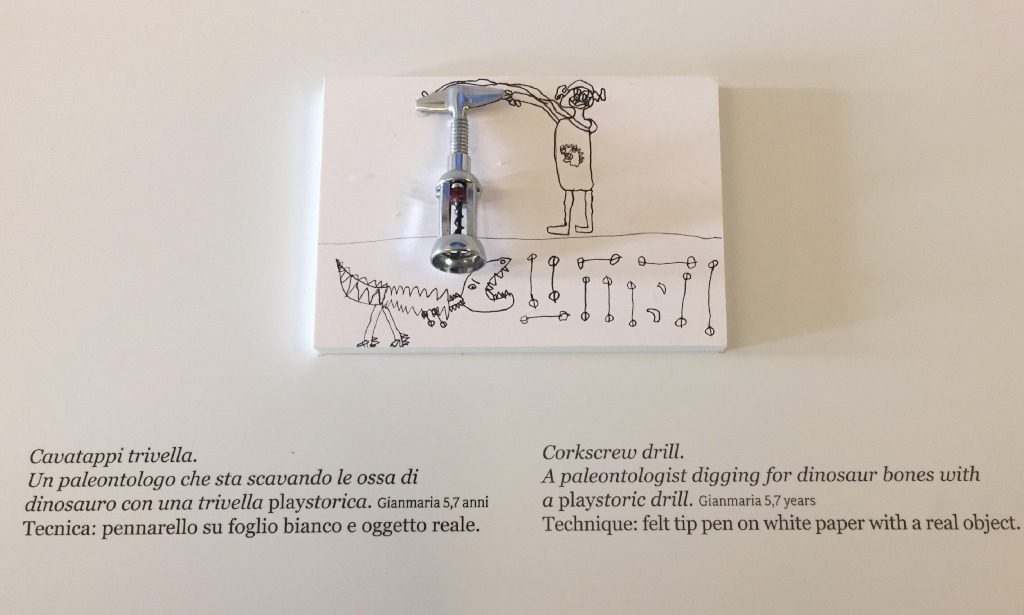
Visual metaphor in chidren’s learning processes Loris Malaguzzi International Centre, Reggio Emilia
© Preschools and Infant-toddler Centres – Istituzione of the Municipality of Reggio Emilia and Reggio Children
The Reggio Emilia approach to early years learning began post second world war, in the surrounding farmlands of the city of Reggio Emilia in Italy. As communities began to recover from the conflict and destruction wrought by the war in the time of fascist dictatorship a group of parents got together and built a pre-school using rubble and equipment from the war, transforming the machinery and consequences of war through the strong hope for a new chapter in the life of their children. Other citizens and farmers also contributed to the construction process and in this way the pre-school was built, managed and sustained by the community. This democratic process attracted a teacher called Loris Malaguzzi who became involved in the endeavor from 1946 until his death in 1994. Loris Malaguzzi introduced many educational innovations such as an atelierista (a teacher with artistic background) in every school, so that children’s knowledge building processes could include the poetic, metaphoric languages alongside the languages of cause and effect logic. Over twenty years Loris Malaguzzi and the parents, teachers and atelierista’s in Reggio Emilia made visible the children’s theories and learning through careful and aesthetically appealing documentation. They brought this into the centre of their attempts to gain the agreement of the Reggio Emilia Municipality to take responsibility for the schools. In 1963 the Reggio Emilia Municipality signed an agreement taking on the running of the schools. The approach is based on specific values. These include holding a strong image of the child as a rights bearer and citizen who has 100 languages of expression. The role of educators is to listen for the child’s interests and to show solidarity with children’s thinking by offering experiences, materials and provocations to children’s learning processes. Recycled materials are curated in a gallery-like space called the Remida where the schools, families and other citizens source recycled materials with which to create both in schools and in families. Today the 21 pre-schools (3-6 years) and the 12 infant-toddler centres (0-3 years) of Reggio Emilia continue to evolve this education project of the City, a key value of which is to work with the “languages” of materials. Each year people from all over the world converge in Reggio Emilia for various Study Groups during which the municipal preschools (scuola dell’infanzia) and infant-toddler centres (nido’s) open to participants, delegates participate in presentations from experienced pedagogista’s and atelierista’s, visit the Remida, see the exhibitions of documented inquiries in the Loris Malaguzzi Centre and generally soak up the atmosphere of a city where children’s voices are valued and the traces of their thinking are everywhere.
(For further information: www.reggiochildren.it)
Why a Reggio inspired ECD in Samora Machel?

© Preschools and Infant-toddler Centres – Istituzione of the Municipality of Reggio Emilia and Reggio Children
In 2017 two citizens of South Africa, Mzi Ndzuzo and Sbosh Mepeni, pioneer founders of an NPO called Ubuntubethu in the informal settlement of Samora Machel next to Philippi Township in Cape Town, visited Reggio Emilia as part of a cultural exchange programme. They had identified a need for an Early Childhood Development Centre (ECD) in Samora Machel. Their visit to Reggio Emilia included a meeting with City Officials who shared with them the stories of the strong relationship of solidarity Reggio Emilia had with Samora Machel, first president of a liberated Mozambique and with Oliver Tambo, first president of the African National Congress. Indeed, in the 1970’s Reggio Emilia was the first European city to sign a Memorandum of Understanding with the ANC. Mzi and Sbosh viewed the copy of this historic memorandum in the archives of Reggio Emilia and celebrated with the officials this historical connection between Reggio Emilia and Southern Africa. Furthermore, when Mzi and Sbosh encountered the inspiring municipal pre-schools and infant-toddler centres they were very moved and became determined to bring the Reggio Emilia approach to early years learning into the establishment of their ECD, convinced that their namesake Samora Machel would be watching over the process – as would Oliver Tambo, since the main road through Samora Machel settlement is none other than Oliver Tambo Drive! Read More Here
